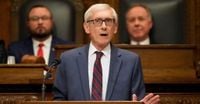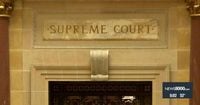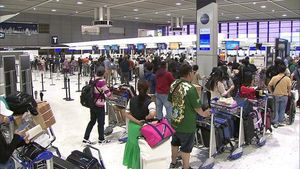The Wisconsin Supreme Court ruled on April 18, 2025, that Governor Tony Evers’ partial veto, which extends school funding increases for an additional 400 years, is constitutional. The decision, passed with a 4-3 vote, highlights the expansive nature of the governor's veto powers, which have stirred debate among legislators and citizens alike.
In the original budget bill, the Republican-controlled Legislature had included a $325 increase to schools’ revenue limits for the 2023-24 and 2024-25 school years. However, Evers’ veto altered the language to extend this increase through the year 2425 by striking two digits and a dash. Justice Jill Karofsky, writing for the majority, stated that the constitution does not limit the governor’s veto power based on the extent of policy change. "We uphold the 2023 partial vetoes, and in doing so we are acutely aware that a 400-year modification is both significant and attention-grabbing," Karofsky noted. "However, our constitution does not limit the governor’s partial veto power based on how much or how little the partial vetoes change policy, even when that change is considerable."
The case against Evers was brought by Wisconsin Manufacturers and Commerce on behalf of two taxpayers, Jeffery A. LeMieux and David T. DeValk, who argued that the governor’s action was unconstitutional and undemocratic. Scott Manley, Executive Vice President of Government Relations for WMC, expressed disappointment with the ruling, stating that Evers had "exceeded his authority at the expense of taxpayers, and now our great-great-great-great-grandchildren will still be paying the price for his reckless disregard for the law."
In dissent, the three conservative justices criticized the majority opinion, with Justice Brian Hagedorn arguing that the court has effectively allowed the governor to legislate independently of the legislature. "How does a bill become a law?" Hagedorn wrote. "According to the majority, one option looks like this: The legislature passes a bill in both houses and sends it to the governor. The governor then takes the collection of letters, numbers, and punctuation marks he receives from the legislature, crosses out whatever he pleases, and — presto! — out comes a new law never considered or passed by the legislature at all. And there you have it — a governor who can propose and enact law all on his own."
Hagedorn went on to describe the ruling as a "mockery of our constitutional order," arguing that it legitimizes a "fantastical state of affairs" where a governor can unilaterally change the fiscal landscape of the state. Meanwhile, Justice Rebecca Dallet, who concurred with the majority, emphasized the precedent set by previous cases, noting that the court has historically allowed governors to change policy through partial vetoes.
Republican leaders were quick to criticize the court's decision, framing it as a partisan move that undermines legislative authority. Assembly Speaker Robin Vos stated, "Is any Wisconsin citizen surprised that the liberals on the Wisconsin Supreme Court are now a rubber stamp for liberal ally Tony Evers?" Vos added that the ruling would lead to increased taxes for Wisconsin residents. Senate Majority Leader Devin LeMahieu echoed these sentiments, calling the decision "an unprecedented overreach that will impact generations of Wisconsin taxpayers."
In contrast, Governor Evers hailed the ruling as a victory for Wisconsin's education system, stating that schools deserve "sustainable, dependable, and spendable state support and investment." He reiterated the need for an additional $3 billion in funding for K-12 education, which he argued is necessary to meet the needs of students and schools across the state. "Today’s decision only further underscores the urgent need for Republican lawmakers to approve the K-12 investments I’ve proposed to ensure our kids and our schools have the resources they need now and into the future," Evers said.
The implications of this ruling extend beyond immediate funding concerns. Lawmakers are now considering various options to address the governor's veto powers in future budgets. Karofsky outlined potential legislative actions, including amendments to the state constitution or drafting separate bills to avoid the governor’s partial veto. One proposed amendment would bar the governor from using veto power to create or increase any tax or fee, while another would limit the governor’s ability to strike out numbers in appropriations bills.
Wisconsin's history of partial vetoes dates back to 1930, and the state has seen a variety of interpretations of this power over the decades. The ruling follows a trend of legal battles regarding the extent of governors’ veto authority, with the court generally siding with the executive branch in recent years. Critics of the ruling argue that it sets a dangerous precedent, while supporters believe it upholds the governor's rights as outlined in the state constitution.
As Wisconsin moves forward, the ongoing debate over the balance of power between the governor and the legislature will undoubtedly shape the political landscape. With the next budget cycle approaching, lawmakers will need to navigate the implications of this ruling carefully, balancing fiscal responsibility with the educational needs of the state’s students.
In the wake of the ruling, the future of Wisconsin's education funding and the legislative process remains uncertain, as both sides prepare for what could be a contentious battle over the budget in the coming months.








